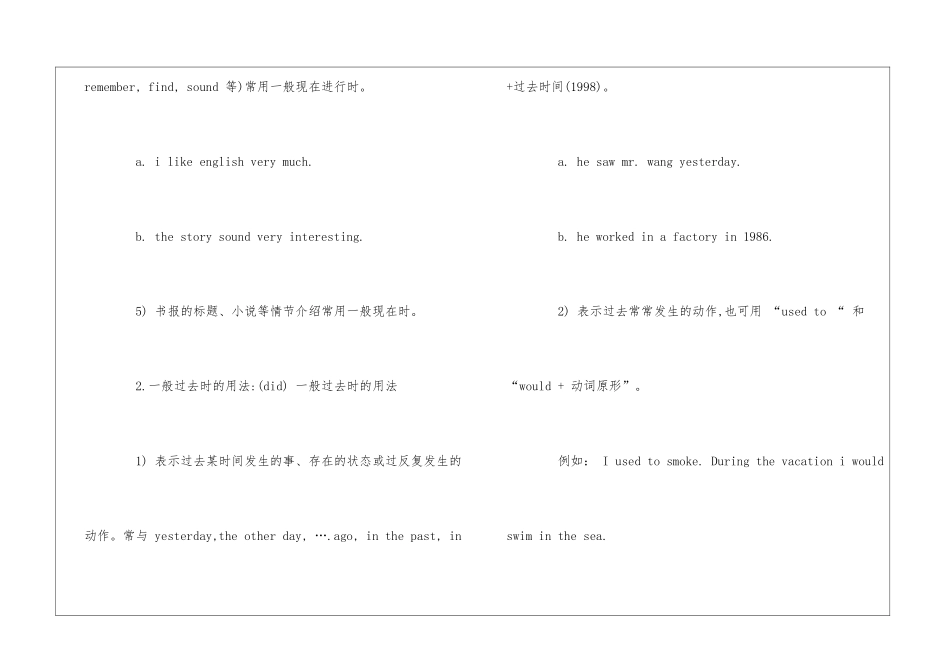英语动词的时态知识点 英语动词的时态知识点 时态动词是谓语动所表示的动作或情况发生时间的各种形式。英语动词有 16 种 时态,但是常用的只有 9 种:一般现在时、一般过去时、一般将来时、现在进行时、过去进行时、现在完成时、过去完 成时、过去将来时、现在完成进行时。下面分别介绍。 1、 一般现在时的用法 (do/does) 1) 表示常常性、习惯性的动作; 表示现在的状态、 特征和真理。 句中常用 often, usually, every day, sometimes, every week/year, twice aweek 等时间状语。 例如: a. He goes to school every day. b. He is very happy. c.The earth moves around the sun. 2) 在时间状语从句和条件状语从句中,用一般现在时表示将来。例如: 在时间状语从句和条件状语从句中,用一般现在时表示将来。 例如: a. If you come this afternoon, we’ll have a meeting. b. When I graduate, I’ll go to countryside. 3) 有时这个时态表示按计划、规定 按时间表要发生的动作(句中都带有时间,有时这个时态表示按计划、规定, 按时间表要发生的动作,但限于少数动词 状语),但限于少数动词,如:begin, come, leave, go ,arrive, start , stop, return,open, close 等。 例如: a. the meeting begins at seven. b. the rain starts at nine in the morning. 4) 表示状态和感觉的动词(be, like, hate, think, remember, find, sound 等)常用一般现在进行时。 a. i like english very much. b. the story sound very interesting. 5) 书报的标题、小说等情节介绍常用一般现在时。 2.一般过去时的用法:(did) 一般过去时的用法 1) 表示过去某时间发生的事、存在的状态或过反复发生的动作。常与 yesterday,the other day, ….ago, in the past, in +过去时间(1998)。 a. he saw mr. wang yesterday. b. he worked in a factory in 1986. 2) 表示过去常常发生的动作,也可用 “used to “ 和“would + 动词原形”。 例如: I used to smoke. During the vacation i would swim in the sea. 注: ”used to “ 表示过去常发生而现在不再发生的动作或存在的状态。 “would + 动词原形”没有 “现在不再……”含义。 3.一般将来时的用法(shall/will do)一般将...


